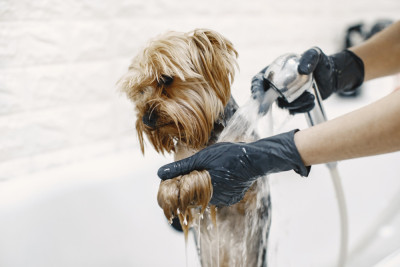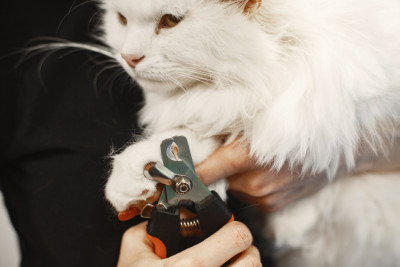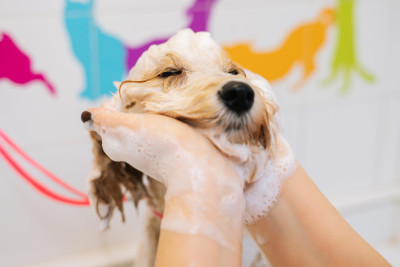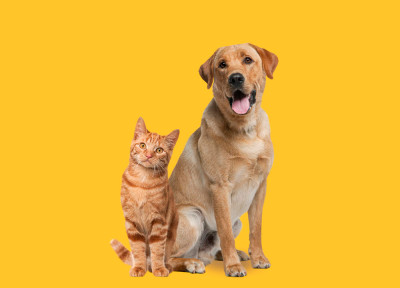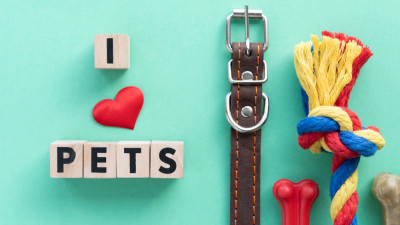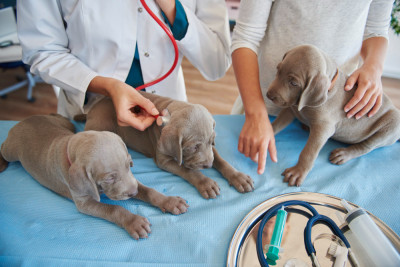The Importance of Pet Grooming
Pet grooming serves multiple purposes beyond making your pet look clean and tidy. Here are some of the key reasons why grooming is essential:
1. Beyond Aesthetic Appeal: While a well-groomed pet is undeniably attractive, grooming goes beyond looks. It promotes your pet's overall cleanliness, comfort, and health.
2. Health Benefits: Grooming helps detect skin issues, parasites, lumps, and other health concerns early. It can prevent or alleviate skin infections, matted fur, and ingrown nails, among other problems.
3. Strengthening the Bond: The grooming process is an opportunity to bond with your pet. It's a time of physical contact, trust-building, and positive reinforcement.
Pet Grooming Tools and Supplies
Before you begin grooming your pet, you'll need the right tools and supplies. The specific items you require may vary based on your pet's species and breed, but some common grooming essentials include:
1. Brushes and Combs: Essential for removing tangles, mats, and loose fur. Different brushes suit different coat types.
2. Shampoos and Conditioners: Pet-specific shampoos and conditioners help maintain healthy skin and fur.
3. Nail Clippers and Grinders: Necessary for keeping your pet's nails at a safe length.
4. Ear Cleaners: Used to clean your pet's ears gently and prevent ear infections.
5. Toothbrushes and Toothpaste: Dental care is crucial for pets. Regular brushing helps prevent dental issues.
6. Clippers and Trimmers: Necessary for trimming fur and maintaining a tidy appearance, particularly for breeds with long or dense coats.
Dog Grooming
1. Bathing and Brushing: Regular baths and brushing help remove dirt, debris, and loose hair. The frequency depends on the breed and activity level of your dog.
2. Nail Trimming: Overgrown nails can cause discomfort and affect your dog's gait. Trim them as needed.
3. Ear Cleaning: Inspect and clean your dog's ears regularly to prevent infections.
4. Dental Care: Brush your dog's teeth to prevent dental issues and maintain fresh breath.
5. Haircuts and Styling: Some breeds require professional grooming for specific haircuts and styles.
6. Handling Shedding: Breeds that shed heavily may require additional grooming during shedding seasons.
Cat Grooming
1. Brushing and Mat Removal: Cats benefit from regular brushing, especially long-haired breeds prone to matting.
2. Bathing (When Necessary): Cats are generally self-groomers, but some may need occasional baths.
3. Nail Trimming: Keep your cat's nails in check to prevent them from becoming overly sharp.
4. Ear Cleaning: Inspect and clean your cat's ears if you notice wax buildup or odor.
5. Dental Care: Brushing your cat's teeth can help prevent dental issues and maintain oral hygiene.
6. Dealing with Hairballs: Grooming can help reduce hairballs, a common issue in cats.
Small Animal Grooming
1. Rabbit Grooming: Brush your rabbit's fur to prevent matting and provide occasional baths if necessary.
2. Guinea Pig Grooming: Brush your guinea pig's coat and trim their nails regularly.
3. Ferret Grooming: Ferrets may need occasional baths and ear cleaning.
4. Hamster and Gerbil Grooming: Grooming needs for these small rodents are minimal but may include brushing.
5. Hedgehog Grooming: Hedgehogs benefit from occasional baths and nail trimming.
6. Chinchilla Grooming: Chinchillas need dust baths for maintaining their fur.
Bird Grooming
1. Feather Health: Regular preening helps birds maintain healthy feathers.
2. Beak Trimming: Some birds may require beak trimming if their beaks overgrow.
3. Nail Care: Keep bird nails from becoming too long.
4. Bathing: Birds may enjoy occasional baths to clean their feathers.
Reptile Grooming
1. Shedding Assistance: Some reptiles may require assistance during the shedding process.
2. Skin Hydration: Provide a humidity-controlled environment to aid in shedding.
3. Cleaning Enclosures: Regularly clean and sanitize your reptile's enclosure to prevent health issues.
Grooming for Exotic Pets
Exotic pets have unique grooming needs that vary by species. For example:
1. Hedgehog Bathing: Hedgehogs need regular foot baths to maintain hygiene.
2. Ferret Grooming: Ferrets may require bathing and nail trimming.
3. Tarantula Molting: Handling a molting tarantula requires care and gentleness.
4. Sugar Glider Bathing: Sugar gliders may need occasional baths for hygiene.
5. Tortoise Shell Cleaning: Keep a tortoise's shell clean and free from debris.
Frequency of Grooming
The frequency of grooming varies depending on your pet's species, breed, coat type, and individual needs. It's important to establish a regular grooming routine, whether it's daily brushing for long-haired cats or monthly baths for dogs. Consistency is key to maintaining your pet's health and appearance.
Choosing the Right Groomer
Deciding between DIY grooming and professional grooming depends on your comfort level, your pet's needs, and the specific services required. If you choose professional grooming, research groomers carefully, and ask for recommendations from trusted sources.
Dealing with Special Grooming Challenges
Some grooming challenges may arise, such as matted fur, flea infestations, or skin conditions. It's essential to address these challenges promptly. If you're unsure how to handle them, consult a veterinarian or a professional groomer for guidance.
Pet Grooming and Your Pet's Health
Grooming plays a vital role in your pet's health:
1. Early Detection of Health Issues: Regular grooming can help you spot health concerns early.
2. Maintaining Healthy Skin and Coat: Proper grooming ensures your pet's skin and coat remain in top condition.
3. Dental Health and Fresh Breath: Dental care is an integral part of grooming for many pets.
4. Preventing Infections: Keeping your pet clean and well-groomed reduces the risk of infections.
The Grooming Routine: Tips and Techniques
Grooming can sometimes be stressful for pets, so it's crucial to establish a positive routine:
1. Creating a Calm Environment: Choose a quiet, comfortable space for grooming.
2. Positive Reinforcement: Reward your pet with treats, praise, and affection during and after grooming.
3. Handling Sensitive Areas: Be gentle when grooming sensitive areas like ears and paws.
4. Brushing Techniques: Learn the appropriate brushing techniques for your pet's coat type.
5. Nail Trimming Tips: Take care when trimming your pet's nails to avoid cutting too short.
DIY vs. Professional Pet Grooming
Deciding between DIY grooming and professional grooming depends on various factors, including your pet's needs and your grooming skills. Many pet owners find a balance between occasional professional grooming and regular DIY maintenance.
Pet Grooming as Bonding Time
Grooming is not just about hygiene; it's also an opportunity to strengthen your bond with your pet:
1. Strengthening Your Connection: Grooming fosters trust and strengthens your relationship.
2. Building Trust: Positive experiences during grooming build trust between you and your pet.
3. The Joy of Pampering Your Pet: Grooming can be a pleasurable experience for both you and your furry friend.
Conclusion: A Groomed Pet is a Happy Pet
Pet grooming is not just about aesthetics; it's about ensuring the health, comfort, and happiness of your beloved animals. Whether you have a dog, cat, small pet, bird, reptile, or exotic companion, grooming plays a vital role in their care. By understanding the grooming needs of your specific pet, choosing the right tools, and establishing a positive grooming routine, you can provide the best possible care for your furry, feathered, or scaly friends. So, embrace the art of pet grooming, and watch your pets thrive with radiant health and a closer bond with their caring owners.

